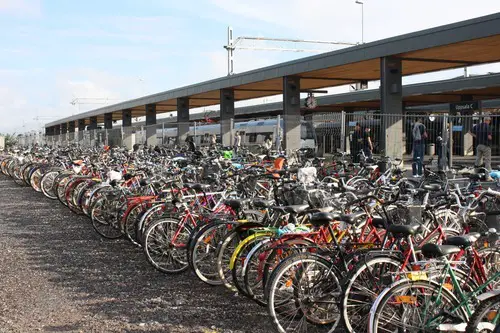London is on a mission to transform itself into a bicycle-friendly city. Last month saw the launch of two ‘cycle superhighways’ linking outer boroughs to the city centre, and on July the 30th London finally implemented a cycle hire scheme – years after numerous other cities introduced similar schemes.
This late launch could have put London in an ideal position. With a variety of bicycle hire schemes operating across the globe and many complications encountered in that time, London had the opportunity to learn from the experiences of these cities. By taking the best features from other schemes, London’s cycle hire could have been a highly-functional service that bypassed the challenges encountered by many of the world’s cities. Instead, it is an almost carbon copy of Montreal’s Bixi, being developed by the same team who implemented the Canadian city’s cycle hire.
Many common problems facing cycle hire schemes have been well addressed in London. If you reach a docking point to find it full, the terminal will tell you where to find the nearest vacant docking point, and grant you 15 minutes free of charge to get there. The bikes are strong, well-engineered and vandal resistant. There is a trade-off of course, with London’s cycle hire bikes weighing twice as much as traditional bikes.
As with Bixi, those wishing to use London’s cycle hire must pay a flagfall for access – priced at £1 for 24 hours, £5 for 7 days or £45 for a year – and also pay for usage. Trips of half an hour or less are free, with anything above that rapidly escalating from £1 for the first hour to £50 for 24 hours’ access. However, this payment must be processed using a debit or credit card as the scheme is not integrated with the Oyster card – London’s wildly popular electronic ticketing system for public transport. This is because additional fees can be charged to riders if the bike is returned late, damaged, or not at all, with debit and credit cards offering an easy way to retrieve funds. However, Londoners are familiar with the simple functionality of the Oyster card, and had the city implemented a system which required riders to link a debit or credit card to their Oyster before using the scheme, the barrier to entry created by a different payment system would have been removed.
The escalating pricing structure of the scheme clearly indicates that these bikes are intended for short trips, with their functionality confirming this. Unlike Vélib’, Paris’ cycle hire scheme, London’s bikes are provided without a lock, meaning the only way to leave them securely is by returning the bike to a docking point.
Unfortunately, the service’s functionality is somewhat diminished by this omission. Planning a short trip into the city to pick up a newspaper? Unless your destination happens to be right next to a docking point, there may be some extra walking involved. Want to risk leaving the bicycle outside a shop for two minutes? Then be prepared to pay £300 if you lose the bike, deducted from the debit or credit card used to hire the bike in the first place. If docking stations were located frequently enough throughout the city, choosing not to include a lock would be less of an issue, but with a distance of around 270 metres between stations – currently located only in London’s city centre – these bikes are not as useful as they could have been.
In Montreal, cold winters mean their bicycle hire scheme only operates between April and November. Because of this, docking points are removable, allowing the city to be more flexible with their infrastructure. The solar-powered docks each hold six bikes, and if an area is experiencing particularly high demand, extra docks can be temporarily added. London needs to follow Montreal’s modularity and introduce back-up docking points to cater for areas experiencing unusually high demand, creating a similar level of flexibility to bus and train services.
London’s busy streets and the risks associated with them also pose a challenge to the cycle hire scheme – one which has yet to be addressed adequately. When Lyon, a city with a municipal population of less than half a million, launched Vélo’V, they saw a 6 per cent increase in bicycle related accidents. London is a bigger city with more intense traffic, and if its cycle hire scheme achieved its aim of 40,000 journeys per day – many of which will be taken by inexperienced cyclists not used to London’s roads – accidents could increase considerably. Including a helmet with each bicycle would minimise risk, but due to the logistical complications of including an item which can’t be permanently fixed to the bicycle, this has not been done in London.
Despite safety concerns, some functional inadequacies and a less than perfect launch (316 of planned 400 docking stations were available on the launch day), London’s cycle hire scheme is off to a strong start. 43,000 trips were taken in the first week, during which time 29,000 new members signed up to the scheme.
London now needs to build on the initial success of its cycle hire scheme by expanding its footprint. Currently only available in the city centre, expanding to outer London needs to be a priority, allowing those in the suburbs the opportunity to travel as sustainably as those in central London. And the frequency of docking points in central London also needs to be increased, making the scheme more convenient, practical and attractive for short journeys in the city.
Photo: ChodHound


